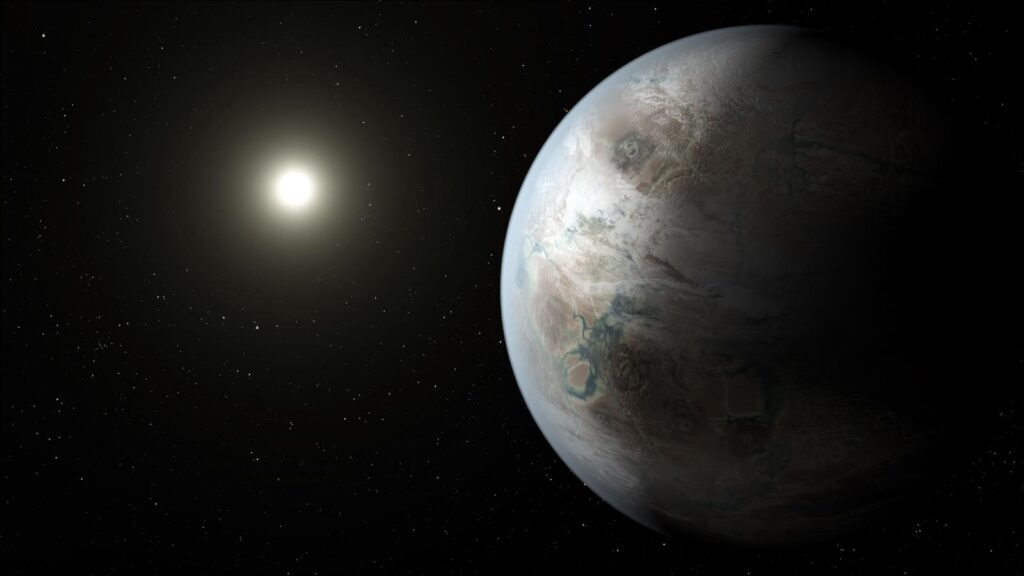This artist’s concept depicts a possible appearance of the planet Kepler-452b, the first … [+]
We like to think that our Sun is an ordinary yellow dwarf star, just one of billions of solar-type stars in our Galaxy. But only in the last few decades have astronomers been able to do comparative asteroseismology of stars like ours. Astroseismology, the study of seismic stellar oscillations, is an essential key to understanding our Sun and potentially billions of other solar systems within the galaxy.
Later this decade, the European Space Agency’s PLATO mission will observe hundreds of thousands of stars like ours. PLATO, the PLAnetary Transits and Oscillation of stars mission, is tasked with finding an Earth counterpart, but measurements of stellar brightness over time will help theorists better understand stars that host planets like our own.
During a recent visit to the Italian Astrophysical Observatory of Catania, on the island of Sicily, I spoke with two researchers who are eagerly awaiting the data that PLATO will provide. I asked them both why understanding the stellar physics of solar-type stars is important.
Stars are the basic building blocks of our galaxy, Enrico Corsaro, a scientist at the Catania Astrophysical Observatory and member of the PLATO science team, told me at the observatory. If we want a better understanding of our galaxy, we must first understand the Sun-like stars, he says. And if we want to better understand whether our solar system is unique or not, we first need to understand the entire planetary system, Corsaro says.
PLATO will offer a new understanding of the galaxy
Among other things, PLATO will greatly improve our understanding of the internal dynamical processes in solar-type stars, Sylvain Breton, a postdoctoral researcher at the Astrophysical Observatory of Catania and a member of the PLATO science team, told me at the observatory. And it will very precisely characterize the masses, radii and ages of solar-type stars, especially those that host planets, he says.
PLATO will host the largest combined digital camera ever flown in space, ESA says. And it will receive light from 26 small telescopes, all mounted on a single satellite platform, ESA notes.
During its nominal four-year mission, which will likely be extended to eight years, PLATO will have an extremely wide field of view covering a total area of the sky of about 2,250 degrees. That’s about 2000 times longer than a full moon.
How important are observations of the Sun in interpreting asteroseismology?
It was vital. “The Sun has been our main laboratory for testing and understanding variability in stellar brightness,” says Breton. By improving the models, we can apply this to stars like the Sun, he says. And if we can measure the age of stars with great precision, then we can also measure the ages of planets in a similar way, Breton says.
Our main goals are to improve our understanding of how stars work, how stars form internally and how they evolve over time, says Corsaro.
To characterize exoplanets, I strongly believe that we really need to know the stars, says Corsaro.
Stars Before Planets
To understand a planet’s history, first, we need to understand the star well, Breton says. You want to track the star’s brightness variation for as long as possible, he says.
Oscillations and fluctuations in the level of light from the star are subject to fluctuations over time, Corsaro says. This tells us something about what the composition of the star’s interior is like, he says.
The main feature of the star we’ll be looking at is the convective envelope, which is roughly between 10 and 40 percent of the star’s total radius, Breton says. In the star’s core, nuclear reactions that fuse hydrogen into helium produce energy, and over long periods of time, whatever is produced in the core is carried to its surface, Breton says.
By analyzing how a star’s acoustic waves propagate across its surface, researchers can learn a lot about its interior.
Is there anything special about our Sun?
There are a multitude of stars that have the same properties as our Sun.
But precisely because of the proximity of our star, we know the Sun in a way that we will never be able to know any other star, says Corsaro. Maybe a hundred years from now, that will change, he says.
